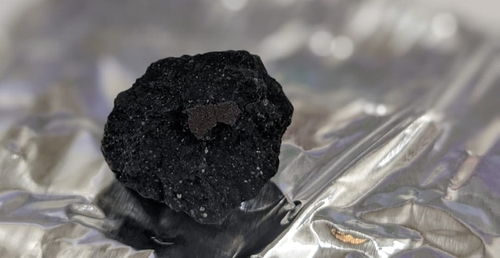Found 300g meteorite… Made of’rare substances’ 4.6 billion years ago
Expert “A truly special meteorite…contains the origin of planetary life”
 viewer
viewer
Special meteorite fragments fall in a small town in England, and the astronomy community is excited. This is because the fallen meteorite is composed of rare substances that retain the chemical properties of about 4.6 billion years ago, the generation of the solar system. Scholars predict that perhaps this meteorite can give clues to the origin of life.
On the 8th (local time), the BBC and CNN of the United States reported that on the evening of the 28th of last month, a meteor burning across the sky was observed in the southern part of the UK. This’shooting star’ was also captured by a special camera installed by the British Museum of Natural History. Using the information contained in this camera, we were able to find out the point of fall.
Some pieces of the meteorite fell on the driveway in front of the home of a small town resident named Winchcomb in Gloucestershire, England. Scholars checked this and determined that it was an actual meteorite fragment, and afterwards a search team was dispatched to find other fragments. Nearby residents reported the discovery.
 viewer
viewer
A total of 300-400 g of meteorite fragments secured to date are in storage at the British Museum of Natural History. Meteorites are attracting attention because they are made of’carbonaceous chondrite’. Dr. Ashley King of the Natural History Museum explained, “Carbon chondrites are special in that they are, in simple terms, a building material left over from the construction of the solar system.” The material is the most primordial and unpolluted in the solar system, giving an understanding of the early history of the solar system and the origin of life on Earth. “There are all the ingredients to understand the process by which life-living planets like Earth are made,” he added.
Richard Greenwood, a researcher at Open University, who was the first scholar to identify a piece of a meteorite that fell on the Witchcom driveway, said, “I was relieved by the sculpture the landlord put in a plastic bag.
According to the Natural History Museum, there are currently 65,000 meteorites that have been confirmed to have fallen to Earth. Of these, only 1,206 were observed to fall, and only 51 were carbonaceous chondrites. Meanwhile, the museum explained that the pieces collected this time are similar to the samples taken by the recent Japanese asteroid probe Hayabusa 2 from the asteroid Ryugu, about 340 million km away from Earth.
/ Intern reporter Park Shin-won [email protected]
< 저작권자 ⓒ 서울경제, 무단 전재 및 재배포 금지 >
